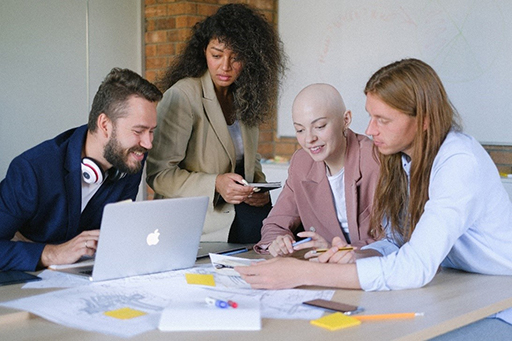3 Summarise strategies to ensure group work supports learner wellbeing
Group work can be a highly effective pedagogical tool which brings variety to the curriculum and enables peer learning. This may be something you have experienced as a learner and utilised as an educator. When planning group work activities, it is important to acknowledge that not all learners will experience group work in the same way. Although some may find it enjoyable and stimulating others may find it stressful. They may have had previous negative experiences and may experience low self-esteem and negative feelings such as social anxieties. These experiences, feelings and anxieties can make social situations and communication difficult in a group context (McManus et al., 2017) and may create internal conflict for the learner between a need to engage with the curriculum and their peers and a real fear of being exposed and embarrassed by the situation (Topham and Russell, 2012).
McPherson et al. (2019) suggest some key strategies that can be used to support learners, helping to remove barriers to learner self-belief and confidence, and that can facilitate turning group work from a barrier into an enabler for promoting resilience:
- Offer opportunities to discuss any concerns with learners prior to a group work activity – especially if this is assessed. Try not to make assumptions based on any disclosed disability and treat each learner as an individual with their own needs.
- Be clear on the purpose of the activity and be prepared to offer an alternative if a learner cannot participate. It might be that you can offer a dedicated role within the group which is less exposing but still allows for their participation.
- Allow extra time for reading and thinking around the task – this will help learners with specific conditions, such as dyslexia or dyspraxia, as well as those who may experience ‘brain fog’ due to medications, etc.
- Allow learners to choose from a range of communication types – this could include verbal, written or, in online environments, the use of text boxes and polls.
- Acknowledge success once an activity has finished – this can be about the process of the activity as much as the output of it.
Activity 4 Enabling group work
Spend some time looking at an interactive resource on group work from the Positive Digital Practices (PDP) project in the UK.
Now consider a recent group work activity that you have used, or one that you have coming up, or imagine planning a group work task. What could you do, or change, to promote learner wellbeing? What have you learned from this resource and some of McPherson et al.’s (2019) suggestions?
Discussion
The PDP resource hopefully helped you understand some of the feelings and experiences that certain learners may have around group work. It provides lots of hints and tips for facilitating comfortable, safe and enjoyable engagement for all types of learners.

